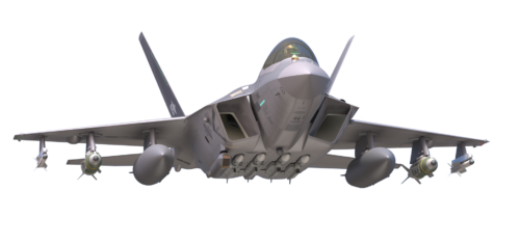The hidden gap in aviation safety: Why management matters more than ever
Firas Sallam is an Aviation Safety Expert, consultant, and author with 25+ years of experience. He pioneered the Synergy Management Approach (SMA), integrating safety principles with Agile, Lean Six Sigma, and Sociocracy. A Flight Safety Foundation member and PMP®-certified professional, he advances safety cultures through strategic leadership and innovation. His book, ‘How to Manage Aviation Safety’, emphasizes resilience, collaboration, and continuous improvement. Passionate about empowering professionals, Firas helps organizations navigate complex challenges and build sustainable safety systems that balance operational excellence with human-centric solutions.
The views and opinions expressed in this column are solely those of the author and do not necessarily reflect the official policy or position of AeroTime.
The terms in square brackets throughout this article represent the Four Main Concepts of the Synergy Management Approach (SMA):
Synergistic Leadership
Resource Empowerment
Risk Mastery
Performance Excellence
When the sky isn’t the limit
In the final days of December 2024, the aviation world faced two heartbreaking tragedies: Azerbaijan Airlines Flight 8243 on December 25 and Jeju Air Flight 2216 on December 29. Beyond the technical details in their preliminary reports, these accidents involved a painful reality—families forever changed and questions left unanswered.
Aviation has made extraordinary strides in safety, yet these incidents remind us that progress doesn’t mean perfection. How is it that, despite cutting-edge technology and rigorous protocols, such accidents still happen? The answer often lies not in what we have but in how we use it. Over 25 years, I’ve observed that it’s not just the systems or the procedures that fail—it’s the environment in which they operate.
Recognizing the ‘management gap’
The disconnect is what I call the ‘management gap’. It’s not the absence of frameworks like Safety Management Systems (SMS) or Standard Operating Procedures (SOPs), those are often well-designed and robust. Instead, the issue arises when these frameworks are not effectively woven into the daily fabric of operations.
“Knowledge is of no value unless you put it into practice.” —Anton Chekhov
This quote resonates deeply. Even the most carefully constructed processes can falter if the leadership approach fails to create a culture where safety isn’t just a task, it’s a value. When safety becomes a checklist instead of a mindset, vulnerabilities emerge, and risks begin to multiply unnoticed.
The Synergy Management Approach (SMA)
Seeing these blind spots repeated across organizations led me to develop the Synergy Management Approach (SMA), a framework I present in my book, ‘How to Manage Aviation Safety’. The SMA is built on a critical insight: while human error is often cited as the cause of accidents, human adaptability is just as often the reason disasters are averted.
Embracing human adaptability through neuroscience
A key principle of SMA, drawn from Safety-II thinking, is that human adaptability isn’t just an error source, it’s an asset. This aligns with neuroleadership research, which shows that when people feel psychologically safe, the brain’s prefrontal cortex is more engaged, enabling higher cognitive functioning and creative problem-solving. Conversely, in toxic or high-threat workplaces, the amygdala triggers ‘fight-or-flight’ responses that diminish strategic thinking and collaboration.
Rather than treating adaptability as a weakness to be managed, the SMA embraces it as a strength. Drawing on these insights, the approach emphasizes creating environments where individuals can think critically and adapt effectively under pressure [Resource Empowerment].
Take US Airways Flight 1549 as an example. Captain Sullenberger’s Hudson River landing was a masterclass in judgment under pressure, achieved not by following a step-by-step manual but by adapting skillfully when no script fitted the situation. The SMA provides the tools to support such decision-making while maintaining the necessary structure and consistency of aviation safety systems.
“Courage is grace under pressure.” —Ernest Hemingway
In aviation, resilience is born in environments where adaptability is nurtured, not stifled by blame culture. If we truly want to manage safety effectively, we must balance the structure of standardization with the agility of human judgment, ensuring psychological safety is a cornerstone of leadership [Synergistic Leadership].
Safety doesn’t fly solo
As aviation operations grow more complex, the ability to manage safety effectively becomes not just a necessity but a competitive advantage. The question isn’t whether we have enough procedures or technologies, it’s whether we possess the leadership mindset and management capability to ensure these resources work in synergy.
The upshot? Airlines that excel in leadership-driven safety often reap tangible benefits: reduced downtime, stronger brand loyalty, and a reputation that attracts both customers and top talent.
“All you need in this life is ignorance and confidence; then success is sure.” —Mark Twain
Twain’s quip reminds us that blind confidence can be dangerous in a field as unforgiving as aviation. But here’s the crucial part: implementing SMA isn’t about revolutionizing your entire safety system overnight. It’s about understanding how management decisions impact safety outcomes and making small, strategic adjustments that compound over time—turning safety from a department into a dynamic, organization-wide capability [Risk Mastery].
Grounded lessons
Even industry giants are not immune to the consequences of the management gap. Boeing’s waves of production issues, culminating in the two tragic 737 MAX accidents of 2018 and 2019, are a stark reminder of how overlooking safety as a strategic priority can lead to catastrophic outcomes. At one point, Boeing’s stock plummeted by over $60 billion, a direct consequence of eroded trust and systemic vulnerabilities.
But Boeing’s ongoing recovery also shows a path forward. Through transparent communication, strategic recalibration, and a renewed focus on holistic accountability [Performance Excellence], the planemaker has begun to rebuild both its reputation and its operational resilience. These lessons underscore the critical need for leadership not only to enforce compliance but also actively foster environments where safety is integrated into every decision—a core tenet of the Synergy Management Approach (SMA).
A vision for future articles
So, where do we go from here?
Refine Leadership Models: Proactive leaders foster trust, clarity, and open dialogue, turning safety from a compliance task into a collective mission.
Cultivate Adaptive Teams: Embrace Safety-II thinking to tap into the human capacity for innovation, especially when standard protocols fall short.
Adopt Incremental Changes: Small, well-targeted adjustments can strengthen your safety ecosystem and generate measurable returns, both operationally and financially.
We’ll explore these themes in-depth in upcoming articles, using real-world success stories and actionable strategies to show how bridging the management gap can deliver sustained, profitable, and resilient aviation operations.  The post The hidden gap in aviation safety: Why management matters more than ever appeared first on AeroTime.
Firas Sallam is an Aviation Safety Expert, consultant, and author with 25+ years of experience. He pioneered the…
The post The hidden gap in aviation safety: Why management matters more than ever appeared first on AeroTime.





